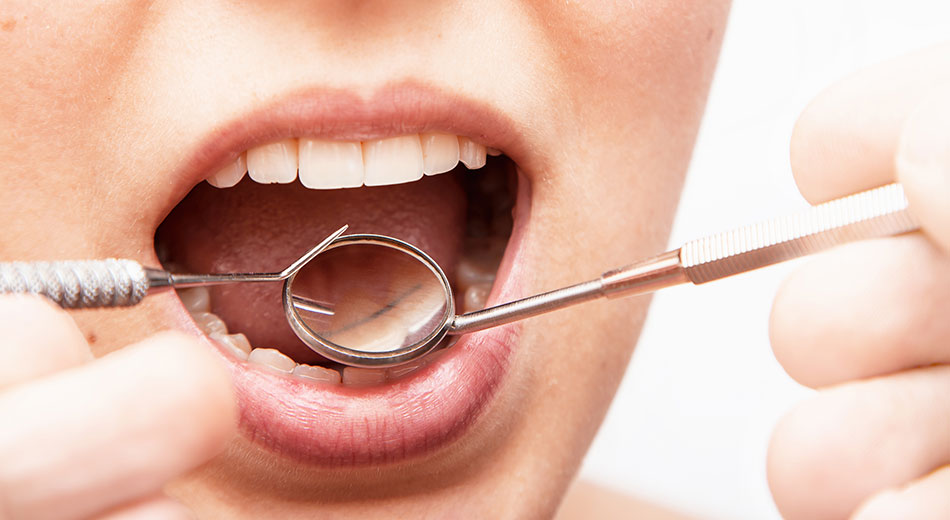Call 408-257-5950 • 19000 Cox Avenue, Suite A • Saratoga, CA 95070
The Benefits of Periodontal Deep Cleaning

Periodontal deep cleaning is an essential and effective part of treating gum disease. Not only does it reduce and remove the bacteria that have caused gum disease, but it can also help prevent further damage. Regular periodontal maintenance visits are also recommended following a deep cleaning to keep the gums healthy.
What is deep cleaning?
Deep cleaning includes teeth scaling and root planing. Scaling removes plaque, tartar, and bacteria from teeth below the gumline. Root planing smoothes out rough spots on teeth to discourage new plaque buildup and give gums a chance to reattach to teeth surfaces.
The Benefits of Periodontal Deep Cleaning
A periodontal deep cleaning helps to reduce and reverse the effects of periodontal disease, which can cause bleeding gums, bad breath, receding gums, and eventually lead to tooth loss. The deep cleaning removes plaque and calculus deposits built up around the teeth and between the teeth where regular brushing and flossing cannot reach, promoting healthier gums and reducing inflammation.
If your dentist recommends a deep cleaning, the benefits of this procedure include the following:
- Stopping the advancement of gum disease.
- Treating a current infection and promoting healing.
- Cleaning your teeth above and below the gum line.
- Eliminating bad breath caused by gum disease.
- Protecting the roots of your teeth
What happens during a deep periodontal cleaning?
Deep periodontal cleaning is a two-step process that helps reduce gum disease risk in those with moderate to advanced stages of the condition. The process helps to reduce inflammation and infection caused by bacteria living below the gum line and reduces the pockets of space between teeth and gums where bacteria can get trapped.
The first step involves scaling, and during this appointment, your dentist will remove plaque and tartar from below the gum line. This helps stop bacteria’s further growth that causes inflammation and decay. A special dental tool is used for this procedure, which is more effective at removing hard deposits than regular brushing or flossing at home.
The second step of periodontal deep cleaning is root planing. During this visit, your dentist will remove plaque and tartar from the roots of your teeth and help smooth them down. This helps reduce the size of any pockets developed between your teeth and gums due to periodontal disease. It also encourages gums to reattach better to teeth so that bacteria cannot hide in these pockets and cause further damage.
Sometimes, you may need more than one visit to complete a deep cleaning procedure effectively. Depending on your case’s severity, it could take up to four visits at 1-2 hours each before your treatment is complete. Your dentist will discuss your individual needs before beginning treatment so that you know what kind of timeline you are looking at for recovery time.
Is a periodontal deep cleaning painful?
Periodontal deep cleaning can cause discomfort, but it shouldn’t be painful. If you’re anxious or concerned about the procedure, your dentist may recommend a topical or local anesthetic to numb your gums. After the numbing agent has taken effect, your dentist may use either an ultrasonic scaler or hand instruments to remove plaque and tartar buildup from above and below the gum line. Depending on how much scaling needs to be done, this process can take anywhere from 20 minutes to an hour.
There may be some sensitivity after treatment, and you may notice your gums are swollen and tender for a few days afterward. Minor bleeding is also possible if extensive plaque buildup needs to be removed. Your dentist will advise you on keeping the area clean with salt water rinses or special mouthwashes to avoid infection and further irritation of the gums.
Overall, deep cleaning should not be painful as long as you’re properly prepared and comfortable during the procedure. You can always talk openly with your dentist about any concerns or questions beforehand to ensure that any discomfort experienced is minimal.
Consult your dentist or periodontist
Periodontal deep cleaning is an essential and effective part of treating gum disease. If you are experiencing any symptoms of gum disease, such as redness, swelling, bleeding, or bad breath, it is important to seek treatment immediately. Not only does a deep cleaning reduce and remove the bacteria that have caused gum disease, but it can also help prevent further damage. Regular periodontal maintenance visits are also recommended following a deep cleaning to keep the gums healthy.
Contact us today for more information or schedule an appointment with one of our specialists. We would be happy to answer any questions and help you get on the road to better oral health!
